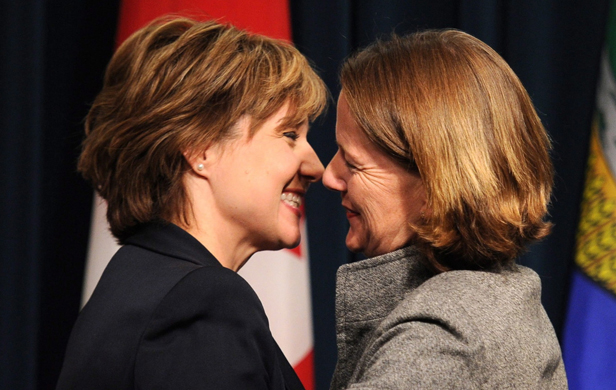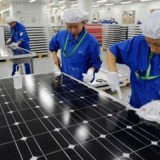This Weekend is the party’s most pivotal Provincial Council meeting ever. Will the NDP really change or will it be more of the same?
Fourteen years ago, I had the privilege to serve in the office of the Minister of Forests with an astute NDP “guru”, a modest but brilliant political thinker and one of the strongest “staffers” in the NDP Government of the day.
His name was Dan Barrett, son of former premier Dave Barrett, whose legacy still resonates to this day. We were ministerial assistants to David Zirnhelt, now the VP of the BCNDP executive, and I held the distinction of his longest serving MA, a bit of an inside joke.
As Ministerial Assistants in a government under siege, the staffers of the late nineties had an unparalleled camaraderie, and there was a great deal of talent in the backrooms of the NDP then.
In addition to Barrett, I had the privilege to rub shoulders with folks like Adrian Dix, John Horgan and Maurine Kariaginis, all of whom found their way to the front bench of the team. As Ministerial Assistant, I served three different ministers and a Premier, so I also spent significant time with “legends” like Moe Sihota, now the paid NDP party President.
However, that is enough about me – I relay these old details simply to set some context for this commentary as it is the NDPers who never put their name on a ballot that I would like to focus on here, on the eve of the most pivotal Provincial Council meeting in the BC NDP’s history.
Back in my university days, I was a Canadian Federation of Students (CFS) representative, a position that came with the office I was elected to on student council, where I cut my teeth in the wacky world of BC politics.
In those days, the CFS in BC was chaired by a young man everyone agreed was an up and comer. So, seven years later when I landed in Victoria as a newbie staffer I was not surprised to see Brad Lavigne as a senior political staffer, then in the office of Andrew Petter, ushering in massive policy suites like the Forest Practices Code.
Lavigne has had an exemplary career, having done a full tour of duty in Canadian universities before serving BC NDP cabinet ministers and ultimately wrapping up his time in BC on the Ujjal Dosanjh bus, which saw the BC NDP crumble under the worst defeat in the history of the social democrats.
But like Ujjal, Lavigne parachuted into Ottawa and anyone who watched the made-for-TV Movie Jack knows that it was Brad who went on to motivate Layton’s leadership bid and was an instrumental figure throughout Jack’s leadership.
Layton’s team became iconic on the Hill, which catapulted them to the stratosphere of New Democrat “guruism” – and Lavigne stands out among them. A regular power panel member on our state media’s flagship political show “Power and Politics,” Lavigne has never stopped his high-energy push through the halls of power.
He and Layton recruited other players in the NDP, such as Brian Topp and Anne McGrath, who have since become “gurus” in their own right, after propelling Jack to rock star status, or so the narrative goes and the movie portrays.
Lavigne now haunts the halls of Hill and Knowlton, a key division of WPP, the worlds largest most powerful lobby. There, he works alongside other staffers whom I shared time with in the dying days of the BC NDP’s reign, including Jim Rutkowski – whom Hill and Knowlton picked upafter a stint Jim did with the Vancouver Port Authority.
Those of us who worked in the nineties NDP, recognized the heavy hitters of the day, including Lavigne, Rutkowski, Horgan and Dix were going places, and while some chose to take up political careers away from the back rooms, the ones who took a different path may be less known in BC – yet their impact on provincial and national politics has been just as profound, if not more so.
Those now in the employ of Hill and Knowlton are clearly enjoying time at the commanding heights in this country. Yet, back in the day Dan Barrett and I shared an office in the pointy buildings, I am not sure there were any lifetime New Democrats in such positions of power.
H&K, for anyone unaware, has long been the go-to group for corporate titans and masters of the universe. They delivered such melodramas as the Kuwait liberation effort that saw a Kuwaiti diplomat’s daughter roll out the eye-watering story of incubator babies being turfed to the floor that was the last straw responsible for invoking “Operation Freedom”, which liberated the Kuwaitis from the brutality of the madman, Iraqi dictator, Saddam Hussein…or so the H&K narrative goes. In the end, it turns out it might of had something to do with the oil.
Which brings me to the most recent BC Election experience.
Mere weeks before the writ was dropped, Brian Topp rolled out the press release that he would indeed be the BC NDP Campaign Manager. The mainstream narrative tells us that Topp hand-picked his “team”, unsurprisingly being the same Layton triumvirate of himself, Lavigne and McGrath. Rutkowski too – so H&K were well placed in the BC NDP War Room of Topp’s choosing.
Days later, Topp rolled out the grand opening of his new shop, Kool Topp & Guy. This reverberated through the circle of politicos who pay attention to this kind of thing. Many congratulations were on offer among their high-level colleagues; however, there was among some of us lowly peripherals a gut-wrenching consternation. What we saw was the crumbling of the inevitable BC NDP win, beginning before our eyes that day.
Topp’s new business partner, Ken Boesenkool is one of Conservative Canada’s top operatives. He is a young, telegenic man with direct ties to the PMO, Manning Institute and other conservative mainstays, including a long association with disgraced former Harper Chief strategist, Tom Flanagan, with whom he co-authored the Alberta Firewall, among many other less than flattering undertakings which delivered power to the Harper Conservatives. And finally the West was “in”.
Boesenkool also did a stint with – you guessed it – Hill and Knowlton, where he had a long list of clients, whom I cannot reveal because he does not discuss them – but it has been well publicized that he did time fighting the good fight for Enbridge.
The shiny new Kool Topp & Guy shingle, hung out days after Topp announced his role as BC NDP Campaign Manager, was a shocker, no doubt. Many were aware that Kool left Christy Clark’s side mere months prior under the cloud of a short lived and rather strange “scandal” that had no paper trail and few details.
Many observers were blindsided by the development of the BC NDP campaign manager teaming up with the architect of the Christy Clark BC liberal revival, mere days before the writ.
There were rumblings – quickly dashed – that included a call for Topp to step down. Concerns raised by bloggers and party supporters fell on deaf ears, as the rank and file were poll-drunk and the Topp-down orchestrated NDP campaign had an iron grip on the Kool-aid jug being liberally poured for everyone, from the leader on down.
Which brings us to today. This weekend the NDP has its quarterly Provincial Council. The first item of business is the report from the Campaign manager. Bill Tielman, identified as an NDP strategist, quipped that there “could be recriminations” in a recent Justine Hunter Globe and Mailpiece, suggesting that the heat Topp has taken since the “surprising upset” could be met with significant push-back from Topp`s strategists that occupied the war room.
A full disclosure of who exactly occupied the war room and handled the leader has yet to occur, but at this point, Topp, Lavigne, Mc Grath, Rutkowski, along with high-level elected executive types, Sihota, O’Brien and Zirnhelt have all been identified as key figures in the construction and execution of the campaign in its entirety. However, fundraising seems to have been executed outside of the direct leadership of the war room.
Topp did say weeks ago during some of the debate which ensued while sifting through the ruins of the BC NDP 2013 election experience, that he intended to “write about the campaign after the leader spoke.” That did not happen and his twitter account has fallen silent since the day the BC Liberal campaign accused him of a conflict of interest – based on his associations with the film industry lobby and the policy being forwarded by the BC NDP Campaign. Not a single tweet from the twit since – the silence has been deafening.
Regardless, the entrails have been pored over in an informal fashion as Dix was quoted saying that an informal NDP review of the party’s election failures is already underway. “There’s lots of reflection taking place right now and I think that’s useful,” Dix claimed recently. Throughout this reflection period we have seen a wide variety of observations, ranging from blaming the apathetic, the Greens, the BC liberal voters and even questioning the polling that clamped down the internal campaign and candidates. But in the end, the one thing everyone agrees on is that the campaign was indeed the reason why BC is still governed by the single most regressive government in history.
Why that is the reality will be further explored as the “Terms of reference” will be set out for a formal review this weekend at Provincial Council. The run-up to this weekend’s gathering of the faithful from fall corners of the Province has already received some harsh yet insightful commentary and the leader is going to be in the hash marks.
The NDP risks squandering a potentially useful exercise if all they do is put Dix in the hash marks, as the 2013 election clearly cannot solely be attributed to him, and doing so may avoid digging deeper to the core of the problem and the generals in the war room whose conflicted interests are at the very heart of the defeat.
The last Provincial Council meeting I attended, my old colleague, Dan Barrett’s father stood up to the mic, delivered one sentence and sat down: “The NDP should change its name, because its no longer new or democratic.”
I am sure Dave Barrett`s observation never rang more true and was never more relevant than it will be at this weekend’s Provincial Council, over ten years later.
Part two of this two-part piece, will be published after we hear from Kool Topp Guy this weekend – and will include the H&K war room damage control report, language and efforts.










